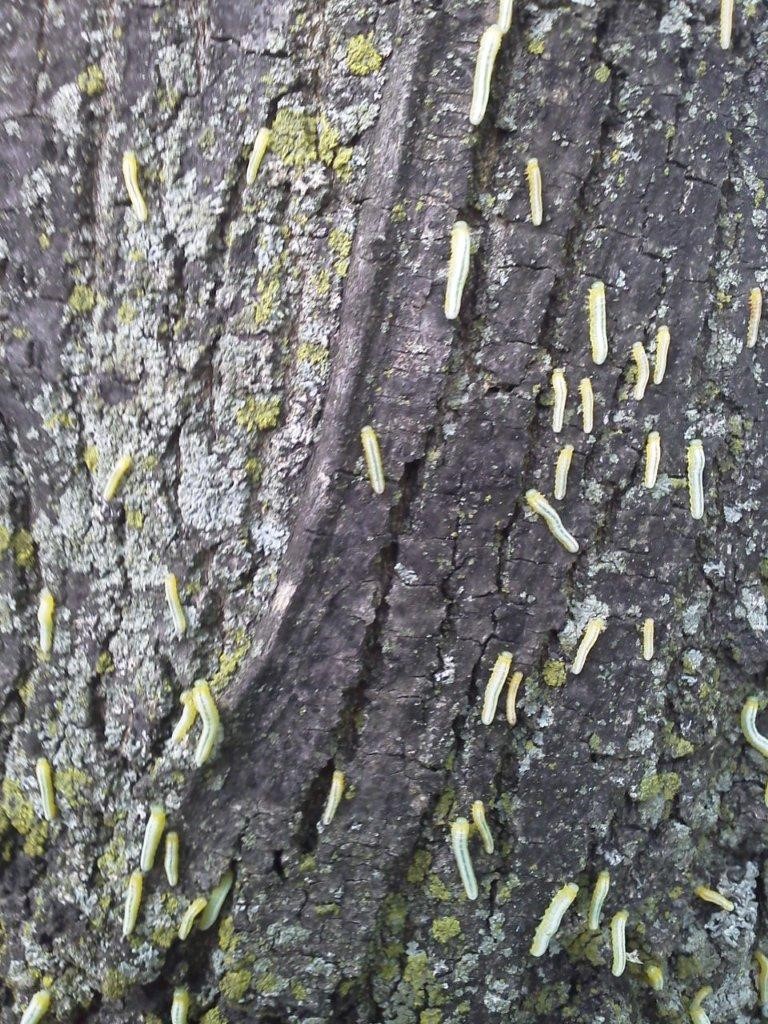Issue 4, May 31, 2019
Brownheaded ash sawfly
Brownheaded ash sawfly larvae (Tomostethus multicinctus) are native insects that are currently defoliating ash trees in northern Illinois. These larvae are greenish-white to yellowish-white and look somewhat like caterpillars, except that they have six or more pairs of prolegs. They have green heads with obvious small black eyes.


Photos: (left) Brownheaded ash sawfly larvae photo submitted from the public 2019, (right) Brownheaded ash sawfly larvae and foliar damage by William M. Ciesla, Forest Health Management International, Bugwood.org
The larvae may feed for two or three weeks, drop to the soil where they construct cocoons around themselves and pupate in the soil. Wasp-like adults emerge the following spring when the leaf buds are turning green and lay eggs in the developing leaflets. The eggs hatch into larvae that feed on the leaves. There is one generation per year. In some cases, larvae can be dislodged from the foliage by strong winds which can make the number of larvae on the ground appear high.
These larvae feed primarily on red and white ash. There have been reports of large trees being totally defoliated. If the tree is healthy, this severe of defoliation should not seriously harm it, and the tree will put out new leaves. If heavy defoliation occurs 3 or 4 years consecutively, it could cause the tree to die. However, this sawfly is not common in most years, it is unlikely to be numerous enough next year to cause serious defoliation and may not warrant treatment.
Because these pests are sawfly larvae and not true caterpillars, Btk (Bacillus thuringiensis kurstaki) products like Dipel or Thuricide will not control these insects. Carbaryl (Sevin) should be effective, as well as many other labeled insecticides. If a cultural or mechanical method is preferred, strong blasts of water from a hose can knock larvae from the foliage to the ground and prevent further feeding.
Author:
Phil Nixon (edited by Sarah Hughson)